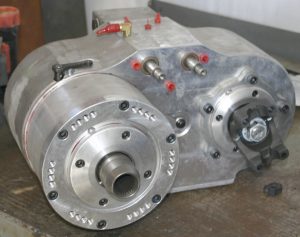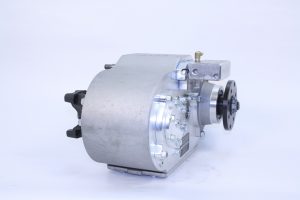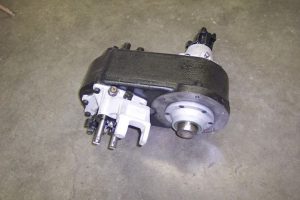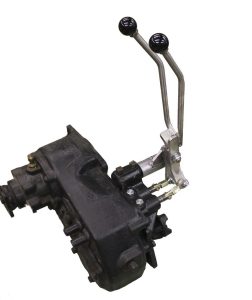Product Highlight
Old School Transfer Case History
 All 4WD Jeeps come with a transfer case. First was the Dana 18; built for the military applications of the first Jeeps, the Dana 18 was the perfect case for these small Jeeps. Compact in size and relatively light in weight, the design made it reliable. They came with a twin-stick shifter system with one shifter controlling the 2wd/4wd and the second shifter controlling the high and low range. Later models were offered in a single shifter design.
All 4WD Jeeps come with a transfer case. First was the Dana 18; built for the military applications of the first Jeeps, the Dana 18 was the perfect case for these small Jeeps. Compact in size and relatively light in weight, the design made it reliable. They came with a twin-stick shifter system with one shifter controlling the 2wd/4wd and the second shifter controlling the high and low range. Later models were offered in a single shifter design.
Next came the Dana 20, which was upgraded in strength and design. Until the introduction of V-8 engines, the Dana 18 was found to be acceptable. The Dana 20 was Jeep’s answer to more power and a quieter transfer case. By 1972, the Dana 20 completely replaced the Dana 18. While the Dana 20 came with many shifter options, the automotive aftermarket really jumped on board with offers of stronger components, deeper gear sets, and shifter options.
In 1980, Jeep introduced the Dana 300 transfer case. Rugged and dependable are the hallmarks of the Dana 300. The Dana 300 was designed with strength and silence in mind. Development began in 1976 by the Dana Corp., and by 1980 the first applications found their way into the Jeep CJ and the I.H.Scout. The Dana 300 was only offered with a single shifter, but again the aftermarket would come through with twin-stick setups and many other options. With a deeper low range, 2.62 vs. 2.03, the off-road world was much happier.

In 1995, Advance Adapters stepped up to offer an alternative to the Dana 300, the Atlas Transfer case. The Atlas transfer case was available with many gear ratios to choose from, all internals were made much more robust, and along with a heavy-duty aluminum case, rock crawlers thought they had found heaven on earth. Ultra-low gearing had become necessary in rock crawling, and the Atlas needed a redesign; thus the Atlas II was born. With the advancements in rock crawling to include endurance racing, the Atlas II now provides gear ratios from 1.05 to 5.0, giving consumers a wide choice of ratios.

